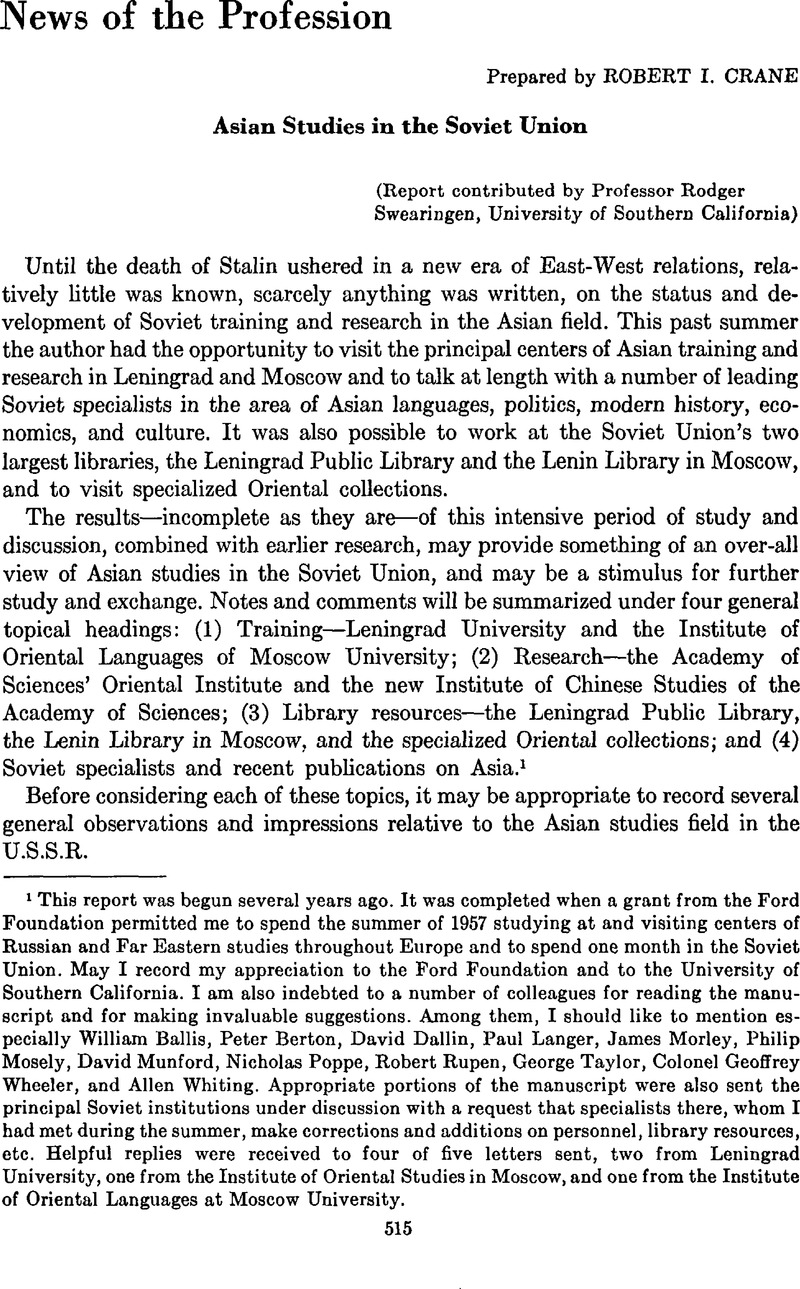No CrossRef data available.
Published online by Cambridge University Press: 23 March 2011

1 This report was begun several years ago. It was completed when a grant from the Ford Foundation permitted me to spend the summer of 1957 studying at and visiting centers of Russian and Far Eastern studies throughout Europe and to spend one month in the Soviet Union. May I record my appreciation to the Ford Foundation and to the University of Southern California. I am also indebted to a number of colleagues for reading the manuscript and for making invaluable suggestions. Among them, I should like to mention especially William Ballis, Peter Berton, David Dallin, Paul Langer, James Morley, Philip Mosely, David Munford, Nicholas Poppe, Robert Rupen, George Taylor, Colonel Geoffrey Wheeler, and Allen Whiting. Appropriate portions of the manuscript were also sent the principal Soviet institutions under discussion with a request that specialists there, whom I had met during the summer, make corrections and additions on personnel, library resources, etc. Helpful replies were received to four of five letters sent, two from Leningrad University, one from the Institute of Oriental Studies in Moscow, and one from the Institute of Oriental Languages at Moscow University.
2 The prewar background of Asian studies in the Soviet Union is sketched in James Morley's note, “Some Important Soviet Organizations and Periodicals Devoted to the Modern History of Asia,” JAS, XVI (Aug. 1957), 673–677.Google Scholar
3 A statement on the organization and tasks of the Institute of Oriental Languages is found on pp. 196–197 in No. 1 (1956) of “Historical Philological Series” of Vestnik of Moscow University.
4 See the report by Robert A. Rupen on pp. 537–541 of this Number.
5 The “Organization of Soviet Institute of Chinese Studies and Its Tasks,” translated by Ivan Spector from the Russian, appeared in JAS, XVI (Aug. 1957), 677–678.Google Scholar
6 A bibliography of postwar Soviet works on China compiled by Professor Peter A. Berton will be published during the summer of 1958 as part of the University of Southern California, School of International Relations' Russian and Far Eastern Research Series. Similar bibliographies for Japan, Korea, and Southeast Asia are under preparation as part of the School's growing Soviet-Asian Relations program.
7 I am indebted to Colonel G. E. Wheeler, Director of the Central Asian Research Center, London, for information regarding Soviet specialists on India and Pakistan and for some further data regarding Sinkiang as well as for his generally helpful suggestions.
8 Professor Robert Rupen of Bryn Mawr College, who visited the Soviet Union in 1956, is exceptionally well informed on Soviet-Mongolian studies and resources.
9 A valuable review of recent Soviet publications on South and Southeast Asia is Alvin Rubinstein's “Selected Bibliography of Soviet Works on Southern Asia, 1954–56,” JAS, XVII (Nov. 1957), 43–54.Google Scholar
10 Other periodicals of the Institutes of History, Economics, Ethnography, Languages, World Economics, and International Relations, etc. in which articles on Asia often appear are listed by Rubinstein on p. 44n.